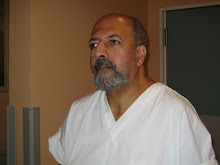Puppy-love lyrics of Bob Dylan, prophet of the Sixties, go on show
By Andrew Buncombe in Washington
04 January 2005
In 1956 Robert Allen Zimmerman was just another skinny teenager in Hibbing, Minnesota. He was dreaming of making it as big as his idol Woody Guthrie. Ten years later, having renamed himself Bob Dylan, he had done just that changing the course of popular music and spawning a generation of imitators.
Now, that fertile, formative decade in Dylan's life in which he moved to New York, fused folk music and rock, and recorded seven albums, including Blonde on Blonde, is the focus of the first major museum exhibition to feature the singer.
"Few musicians have shaped the face of American music and culture in the way that Dylan has," said Bob Santelli, programmes director at the Experience Music Project in Seattle. "He revolutionised the art of lyric-writing in the early Sixties and gave music a conscience. He made lyrics as important, if not more important, than the melody and he did that single-handedly. Until then people were writing about teenage love or puppy love and things that were pretty much on the surface."
The show contains a fair amount relating to both puppy love and teenage obsession. Among the 150 artefacts are yearbooks from Dylan's high school including one belonging to a classmate, Judy Setterstrom, in which he wrote: "You've got the most beautifulist hair in the school. My head's going round 'n' round. I doubt if I'll ever see you again after school lets out, but it's been awful, awful nice knowing you."
Also displayed is Dylan's worn copy of his hero Guthrie's autobiography, Bound for Glory, along with Guthrie's battered guitar.
The exhibition traces Dylan's journey from Hibbing to a stint at the University of Minnesota and then to New York, where he arrived in 1961 with a new name and a hatful of songs, the energy and politics of which led him seamlessly into the coffee house scene of Greenwich Village.
On display are drafts of some of those early songs, including a pencilled "Blowin' in the Wind" and the typed verses of "The Times They Are A-Changin'". The Turkish tambourine that inspired another famous Dylan song is also on display.
Mr Santelli said the exhibition was designed to tell two stories that of his hero's formative years as well as that of a changing America. The two narratives often overlap. One such moment is encapsulated in footage of Dylan's performance at the 1965 Newport folk festival when the singer played an electric guitar and was either booed or not booed by the crowd. Dylan aficionados still dispute this, and the sound quality is too poor to provide a definitive answer.
After initial caution, Dylan, 63, agreed to co-operate with the show and provided access to a large archive of film, including footage that will appear in a documentary by Martin Scorsese.
Dylan is modest about his place in music history and says he is uneasy about the obsession he generates.
"I never wanted to be a prophet or a saviour," he said recently. "Elvis maybe. But prophet? No."
©2005 Independent Digital (UK) Ltd. All rights reserved
mardi, janvier 04, 2005
Inscription à :
Publier les commentaires (Atom)



0 comments:
Enregistrer un commentaire